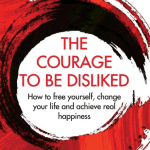NSDR (Non-Sleep Deep Rest) is a term popularized by neuroscientist Dr. Andrew Huberman. It refers to states of deep relaxation where the body is fully at ease, while the mind stays calm yet alert.
Techniques like Yoga Nidra (a guided meditation practice) and self-hypnosis fall under this category. Unlike traditional naps, NSDR doesn’t involve falling asleep but instead puts your brain in a deeply restorative state, offering many of the benefits of sleep without actually going to sleep.
Why Does NSDR Matter?
You might be wondering why Non Sleep Deep Rest is so important. The answer lies in the science behind it. Research has shown that NSDR can help reset your nervous system, boost your learning and memory, and even reduce stress.
A study from the National Institutes of Health (NIH) found that practices like Yoga Nidra can significantly lower cortisol (the stress hormone) while improving overall well-being.
NSDR works by activating the parasympathetic nervous system, often called the “rest-and-digest” mode. This is the opposite of the “fight-or-flight” response we often experience in stressful situations. By engaging this restful state, NSDR helps your body relax and recover more efficiently.
How Does NSDR Work?
When you practice NSDR, your brain waves shift from the active beta waves (associated with wakefulness and stress) to slower theta waves, which are similar to the state just before you fall asleep.
This shift allows your brain to process information and memories more effectively while promoting a state of recovery.
Dr. Huberman has explained that even short sessions of Non Sleep Deep Rest can enhance focus and improve memory consolidation.
In fact, studies have shown that a 10-minute Yoga Nidra session can provide relaxation benefits equivalent to a 40-minute nap! So, you get all the restorative benefits of rest in a fraction of the time.
Incorporating NSDR Into Your Day
One of the best things about NSDR is how easy it is to fit into your routine. Here are some simple ways to include it in your busy schedule:
- Start with Guided Sessions: Use free Yoga Nidra videos or apps. Just lie down, close your eyes, and follow the instructor’s voice. Sessions typically last anywhere from 10 to 30 minutes.
- Try It After Lunch: The afternoon slump is the perfect time for NSDR. Instead of reaching for another cup of coffee, try lying down or reclining to give your brain a quick reset.
- Pair It with a Power Break: Use NSDR as a “mental palate cleanser” between tasks. Research suggests that it can improve focus and reduce mental fatigue caused by constantly switching between activities.
- Consistency is Key: Try to practice NSDR for 10-20 minutes a few times a week. Think of it like brushing your teeth, but for your brain—just part of your regular routine for better mental health.
Why You Should Try NSDR
Non Sleep Deep Rest isn’t just great for immediate relaxation and focus; it also has long-term benefits. Studies show that regular NSDR practices can lead to better emotional regulation and improved cardiovascular health. Plus, it’s a tool you can use anytime, anywhere—no special equipment required!
So, the next time you’re feeling stressed or fatigued, skip the nap or energy drink, and give NSDR a try. Your brain—and your productivity—will thank you.
For more on Non Sleep Deep Rest and how it can benefit you, check out Dr. Andrew Huberman’s discussion on the topic.
Recommended – The Mind-Body Connection: Ancient Wisdom for Modern Wellbeing















